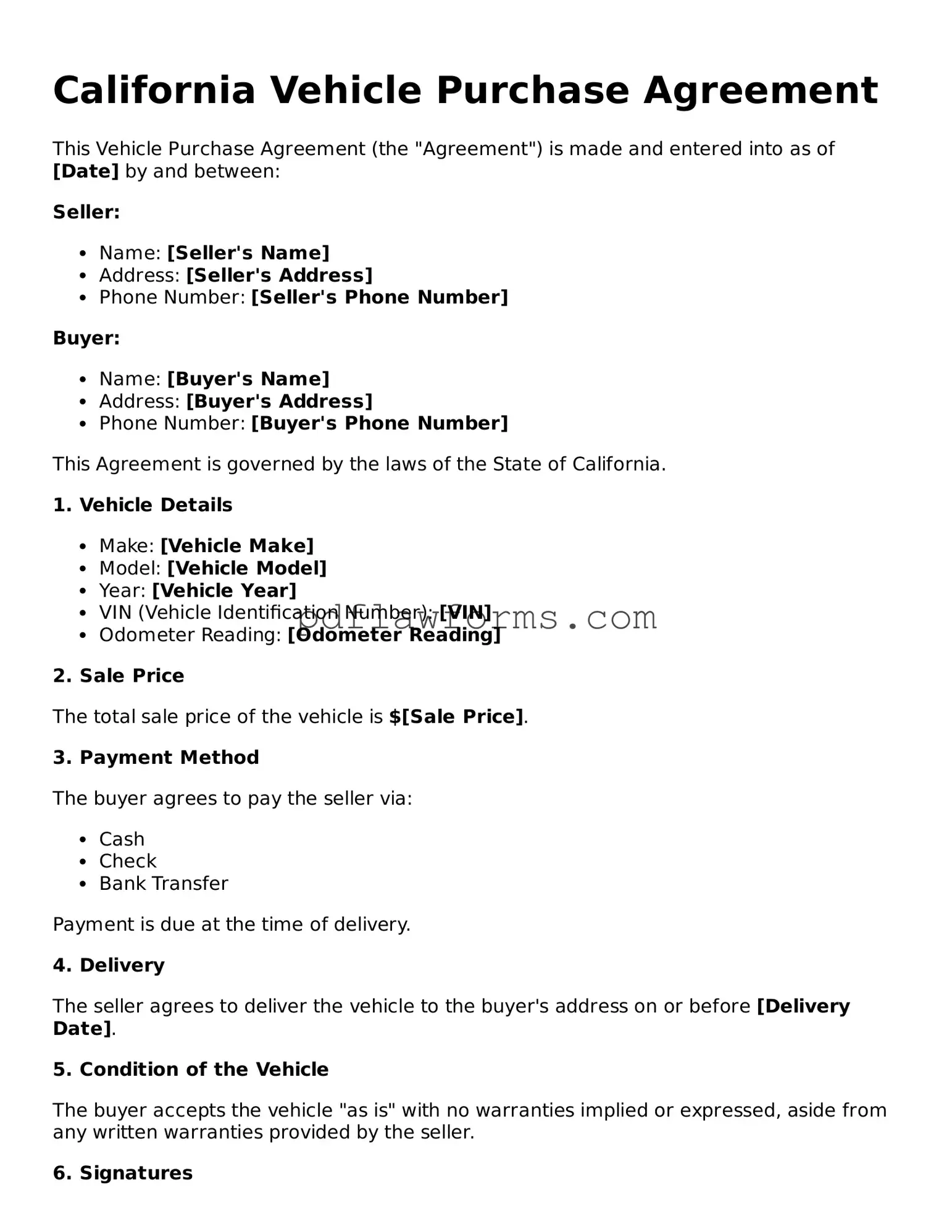Vehicle Purchase Agreement Form for the State of California
The California Vehicle Purchase Agreement form is a legal document that outlines the terms and conditions of a vehicle sale between a buyer and a seller. This agreement serves to protect both parties by detailing the specifics of the transaction, including the purchase price, vehicle description, and any warranties or guarantees. Understanding this form is essential for ensuring a smooth and transparent vehicle purchase process.
Ready to fill out the form? Click the button below to get started!
Make My Document Online
